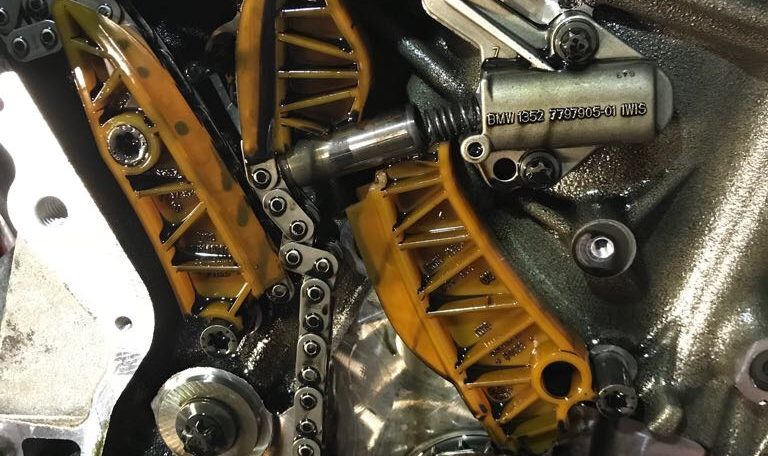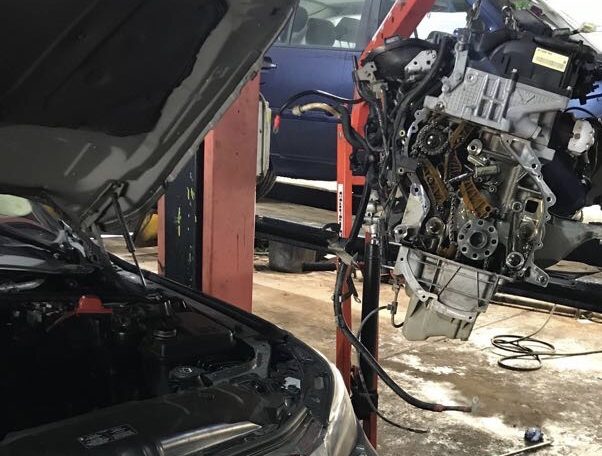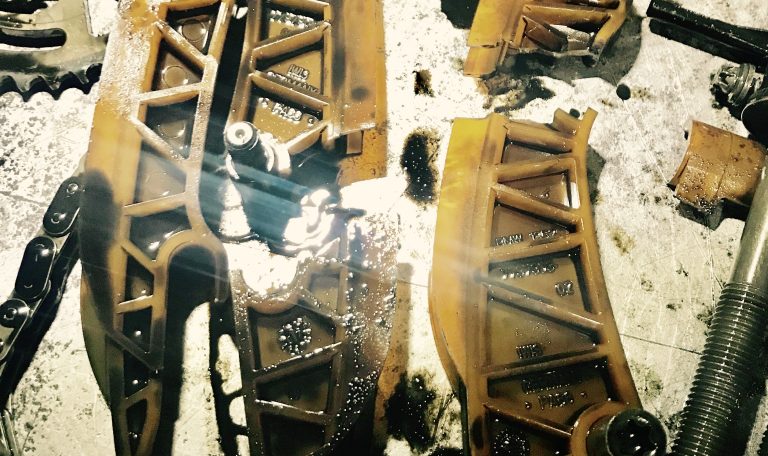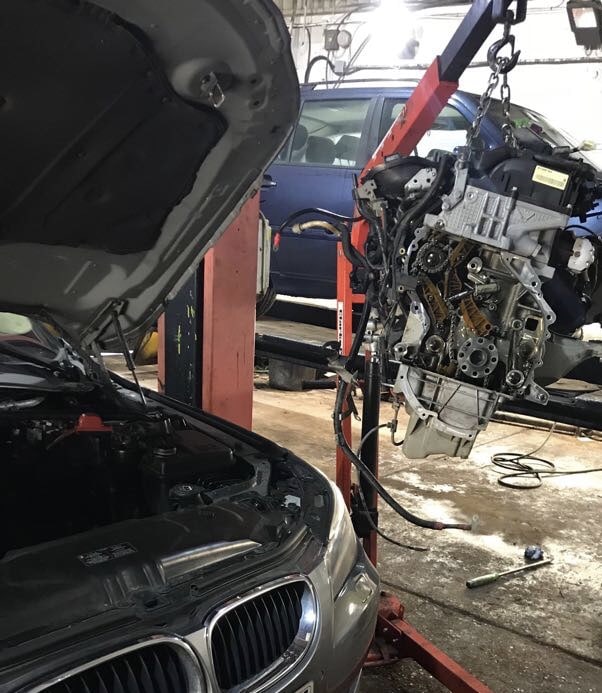Modern Diesel engined cars are wonderful, aren’t they? So much power, efficiency and low emissions (well, during testing at least) whilst not rattling anywhere nearly as much as they used to. One of the best selling ‘luxury’ car brands, BMW, have been at the forefront of Diesel technology for many years, but it wasn’t always this way. As far back as 1935, Mercedes were churning out oil burning versions of their range, yet BMW, although starting building cars in 1936, didn’t even offer a Diesel engine in any of their range of until 1983, and then not for sale in the UK.
Fast-forward to the mid-90’s and BMW were selling Diesels by the million – the ever popular 3 series and 5 series offered excellent performance with fuel economy figures that would be unthinkable in an equivalent petrol car.
By 2006, BMW were offering their new 4 cylinder N47 Diesel engine throughout the 1 series, 3 series and 5 series ranges, with eager buyers, tempted by the 150 BHP+ power, bags of torque, 50 MPG economy and low CO2 emissions, snapping them up for premium prices. Even secondhand, a well used BMW 320D SE was one of the most highly prized used cars and residual values were rock solid. The Diesel engine was ‘the one to have’
Now, whilst not all car owners could realistically be expected to know the inner workings of their car’s engine, I’m fairly sure that most will have heard of a particular component called a cambelt (often known as a timing belt) and of the likely destruction of the engine in the event of this belt breaking. This synthetic rubber belt’s purpose is to drive the camshaft (which opens the valves) in synchronicity with the crankshaft, and to prevent any of the valves smashing into the pistons. The timing belt was first introduced in the early 1970’s (Vauxhall Victor FD as I recall!) and was designed to replace the metal chains that engines has previously used. The belts ran quieter, rarely needed adjusting and if changed at the recommended intervals (typically every 4 years or 48000 miles), would prove pretty much trouble free. BMW used to use belts in several of their engines until the early early 1990’s. I remember my parent’s 1987 BMW 520i as the belt broke on that one morning and bent all 12 valves! I think it may have been the memory of repairing this outside that ruined my enjoyment of fixing cars forever!
Anyway, it wasn’t long before BMW went back to using chains again and they were all pretty much free of faults for many years. Unless you ran the engine really low on oil or never serviced it at all, BMW timing chains were great and certainly never worthy of a feature on Watchdog!
Now, whilst on most engines the timing chain and sprockets etc. are located at the front of the engine making replacement in situ, whilst not exactly easy, at least not impossible. We can for instance, replace the entire timing chain kit on a Vauxhall Corsa in under 4 hours and it’s not particularly expensive.
BMW, in their wisdom, were clearly so confident in the longevity of their timing chains fitted to the new N47 engines and therefore decided that as it would ‘never need touching’, they’d move it to the back of the engine, tucked up against the bulkhead behind the dashboard! The back of the engine also has the gearbox, clutch and flywheel attached so the only way to access the chain is by removing the entire engine from the car!
Had these chains been as reliable as expected, it wouldn’t have been a problem for anyone but as sod’s law would dictate, things didn’t quite run as smoothly as they could!
It wasn’t long before these chains started to break, with catastrophic results for the insides of the engine, often resulting in BMW having to fit a new engine (at over £8000) under warranty! What’s worse, there didn’t even appear to be a particular reason for the breakages – it would affect cars with low mileages, high mileages, full service history, at motorway speeds or just ticking over. Breakage of the chain would cause the car to grind to a sudden halt, whilst inside the engine, valves would smash into pistons, camshafts would fracture, plastic chain guides shatter and all the manner of expensive things to happen. What’s more, with BMW main dealer labour rates well in excess of £130 an hour, this job (which ALWAYS involves complete engine removal and stripping), would cost at best £4000 and at worst, in excess of £8000 for a new engine! Either way, your car could be off the road for weeks while the either the dealer argues about who’s fault it was, or whilst the poor owner tries to scrape together enough money to pay for the repair to his ‘ultimate driving machine’ sat in the corner of a garage with its innards hanging out!
What’s more, with the oldest affected cars now being at least 10 years old and maybe only worth around £3000, in many cases it was simply not economically viable to spend this amount of money, so the cars were being scrapped! Imagine if you’d just bought a 2008 BMW 520D with 80k miles and full service history from a private seller for £5000, only for the chain to let go a few months later and to face the prospect of either throwing it away or spending the same again on fixing it! This happens with surprising regularity – we’ve had 6 such cases through our workshop in the last year alone!
The pictures below show just some of the damage expected.

It’s not supposed to look like this!

Out comes the engine.

Shattered plastic guides
Fortunately, we can usually get the job done for just under £2500 including all parts, labour and VAT. Whilst not the cheapest of jobs, at least it won’t necessarily write off the car and keeps us in work.
If you own a BMW with the 2.0 Diesel engine, made between 2006 and mid-2009 with the engine code N47 D20A or N47 D20D (you can look in the V5C document, service booklet or call your friendly local BMW dealer to check), it might be worth getting an expert to have a look over it. If it hasn’t already broken or been replaced, it’ll cost around £1500 to change the lot as ‘preventative maintenance’ or between £2300 and £4000 if (and when) it breaks!
If you own one newer than mid 2009, you’re one of the lucky ones as after some modification by BMW, the later ones don’t seem to suffer from the same faults.
Either way, if you aspire to owning such a fine BMW automobile with this problematic engine, please be extra cautious (or buy a Mercedes instead). And don’t think for a moment that buying one from a used car dealer with a pricy warranty will help – every time we’ve tried to claim on behalf of a customer’s policy for similar breakage, the claim has been refused on the grounds of the part being ‘at end of life’. If the ‘life’ of a BMW timing chain is reckoned to be less than 100,000 miles, I’d steer well clear!

